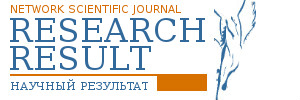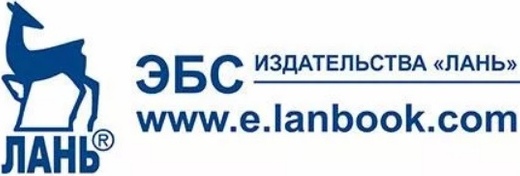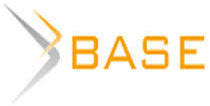IMPLEMENTING THE PRINCIPLES OF CLIL TECHNOLOGY IN THE EDUCATIONAL PROCESS OF ENGINEERING UNIVERSITY
Abstract
This paper describes the development and application of main principles of CLIL technology in Ryazan state radioengineering university in the process of close collaboration of teachers working at the department of Foreign Languages with the teachers from the faculty of Computer Science. Brief history of CLIL development abroad is given; basic principles of its implementation into the environment of engineering institutions are formulated. The main aims of introducing CLIL technology into the academic process are to develop student motivation of learning a foreign language, to give students the possibility of conscious communication in a foreign language in professional sphere, to develop their knowledge and understanding of other cultures, to develop linguistic and communicative competences in the course of communication in a foreign language, simulating communication situations on different topics in professional sphere. Main methods to achieve these aims are given, qualitative results of the work are represented.Keywords: Content and language integrated learning (CLIL), consistent learning, professional competency, communication, productive mastering
Introduction
During the recent decades Russian educational institutions have been actively entering the world of educational environment due to constantly growing demand of our state in highly-qualified specialists being able to speak the foreign language not only in everyday speech but in the situations closely connected with their professional issues. As a result of the changes taking place on the international stage as well as progressive trends in the development of Russian higher professional education the teachers of higher educational institutions have to design efficient models to teach foreign language in close connection with the future profession of students.
The integration process of foreign language and future professional skills can be seen in many spheres, but most actively this process takes place in the sphere of engineering education. It is obvious that this fact is the result of fast development of modern science and technology as well as growing interest of society to new amazing technological achievements and inventions.
In the process of studying different methods of teaching English for professional purposes a number of disadvantages leading to poor acquisition of language by students and, consequently, to further gaps in their mastering the language have been found. These disadvantages became the reason for the search of other technologies being able to teach students to use foreign language in all situations connected with their professional activity. One of such technologies deserving our special attention is content and language integrated learning, or CLIL.
Main part
According to the federal state standards of higher professional education the main aim of teaching a foreign language to the students of engineering universities is the formation of the competence to speak orally in a foreign language [4].
Mastering the competence to speak freely and fluently requires the ability of maintaining the communication in different spheres including the sphere of professional activity. The idea to integrate subject and language learning forms the basis for such technology of learning (known as CLIL technology) when a teacher of foreign language uses either interdisciplinary topics in his classes of language or helps the lecturers who teach professional subjects and simultaneously with them works on a certain professional topic using the means of foreign language. Foreign language in this way is a means of communication and knowledge so that learning in native and foreign languages becomes inseparable single process.
CLIL acronym was introduced by David Marsh, one of the researchers who studied multilingual education in Finland university of Jyväskylä in 1994. According to Marsh, the development of political and educational spheres was the key factor influencing the emergence and development of CLIL in Europe.
According to D. Marsh, "CLIL refers to situations where subjects, or parts of subjects, are taught through a foreign language with dual focused aims, namely the learning of content and the simultaneous learning of a foreign language" [8]. We should also note here that the concept of CLIL has quite a wide interpretation with more than 40 definitions used in European scientific and methodical literature.
A lot of researchers, viz. Ph. Ball [5], S. Darn [7], D. Coyle, Ph. Hood, D. Marsh [6] and others speak about two approaches in the process of implementing subject-language integration in the educational process. The first approach is content-driven education where the educational process is concentrated mainly on the learning of professional subjects. The second approach, the one that we apply in the educational process of Ryazan state radioengineering university, is focused on the primary study of language on the basis of professional subjects and is called language-driven approach.
It should be noted that the separation of approaches given here is rather arbitrary as very often both approaches are used together. The basis of CLIL learning is the fact that the disciplines of an academic program are taught and learnt by means of foreign language. Therefore, this technology is characterized as follows:
- foreign language becomes a means to learn other academic disciplines;
- foreign language is widely used in academic program;
- student motivation to study languages increases;
- students master a foreign language to a sufficient degree after 5-7 years of learning according to bilingual program;
- preference is given primarily to fluency but not to the correctness of speech as the presence of grammar and lexical mistakes is natural for the process of learning a foreign language. Students get fluency in speech only when they use the language as a means of communication.
Ryazan state radioengineering university has been the place for learning language according to CLIL technology for 8 years already. We have been testing CLIL methodology while teaching bachelors and masters on the faculty of Computer Science whose specialties are «Software engineering», «Computing machines, complexes, systems and nets» as well as future specialists of “Computer security” direction. The course of “Foreign language” discipline is made together with the lecturers who teach professional subjects according to the program developed. In our current activity we use «language-driven method», which is considered to be mostly suitable within the frames of the hours dedicated for studying a foreign language. The course of study was designed taking into consideration 4 «С» [1, 9] being the basis for this technology:
1. Content. This is the process of mastering knowledge and skills within the scope of the sphere taught. CLIL technique allows developing interdisciplinary connections.
2. Communication implies getting the knowledge in the professional field chosen by means of foreign language. Foreign language in this case is the tool for communication but not the aim itself. Participation in various discussions, disputes, forums increases motivation, develops students speaking skills in the course of problem learning of a definite subject.
3. Cognition. Development of thinking is one of the most important and inherent elements in the process of mastering a foreign language. Students should be actively involved in the process of learning the meaning of new phenomena creating the conditions for the development of creative personality.
4. Culture. Knowledge in this field allowing to understand native and foreign culture, to find one’s place in this culture, to form positive attitude to other cultures is an essential element of CLIL technology.
Having analyzed foreign and Russian research in the field under consideration [1, 2, 3, 5, 7, 8, 9] as well as our own experience of teaching we have elaborated the following pedagogical principles of CLIL technology being the basis for our work.
1. Principle of authentic language material usage.
Main requirements that should be applied to training material are authenticity, information saturation, and high degree of cognitive load. Interactive material used in this technology leads to increasing motivation and also can be used as a basis to create artificial language environment. A teacher actively makes use of foreign language being a kind of “language model” for his students.
2. Principle of active teacher support in the process of learning.
To achieve the tasks set successively a student needs enough support of his teacher. In the course of forming a foreign-language competence this support decreases with the increase of mastering the language. Implementation of this principle gives the possibility to decrease linguistic load on a student while studying unknown content by means of foreign language.
3. Principle of productive mastering a foreign language.
Problem learning as one of the aspects of CLIL technology offers sufficient amount of teaching techniques and is aimed at active interaction in the course of learning due to the fact that the learning of foreign languages becomes more successful when we have communicative tasks and relevant communicative situations. One of the main characteristics of problem learning is implementing the so-called gap principle according to which authentic communication takes place only in the presence of certain communication gaps.
4. Principle of multicultural communication.
CLIL technology gives the possibility to discuss vast amount of topics from different cultural positions allowing to consider different understanding of common phenomena by the representatives of different cultures.
5. Principle of consistent learning.
The main point of consistent learning is as follows: a teacher must be sure in the fact that he makes student long-term memory work actively leading to further active use of the knowledge received in the process of learning. Consistent learning is of primary importance CLIL technology as a teacher gives the possibility of mastering professional content of a subject simultaneously with mastering a foreign language.
Having considered all aforementioned principles the course of study based on CLIL technology allows to solve the following academic aims and tasks:
1. to solve student motivation in learning a foreign language;
2. to give students the possibility of conscious and free communication in a foreign language in the sphere of their future profession;
3. to develop student knowledge and their understanding of different culture;
4. to develop linguistic and communicative competences in the course of communication in a foreign language simulating communication situations on different topics in professional sphere.
To achieve the aims mentioned above while studying any discipline including foreign language we should necessarily apply the methods of active learning which stimulate independent setting the problem by students and their search of different ways of its solution. Such active methods include presentations, individual projects, interactive lectures and seminars, discussions, case studies, role games, various trainings on certain topics, etc. Interactive methods make the basis of personality-centered education as they offer co-learning and help to realize “subject-subject” communication between a teacher and a student.
The content that a student studies in a class built according to CLIL technology has higher motivating potential in comparison with the content of a standard class of foreign language. Consequently, learning within the frames of subject and language content integration is more intensive and successful in comparison with traditional learning process.
Pedagogical process of mastering a foreign language, in our case English language, in the sphere of professional communication is lengthy enough and has its own dynamics of development. In this connection we have supposed that the formation of foreign-language competence in the sphere of professional communication takes place only during step-by-step organization of integrated subject-language learning by means of foreign language (Table 1).
Таблица 1
Этапы интегрированного предметно-языкового обучения в техническом вузе на английском языке
Table 1
The stages of integrated content-language learning in engineering university
Stage | Tasks | Integration degree of professional education and education of a foreign language | Language ratio in the process of learning (Russian vs. English) |
Preliminary (1 course - bachelors) | Parallel development of professional skills to communicate using the means of a foreign language | Parallel learning of the discipline «Foreign language» and other disciplines of academic program | Parallel model |
Basic (2,3 courses – bachelors and specialists, 1 course - masters) | Using a foreign language as a means of academic activity, formation of cognitive language competence
| Learning the discipline “English for professional studies” integrated with the disciplines of professional block | Integrative model |
Final | Development of cognitive language competence | Studying the disciplines of professional cycle in a foreign language | Parity model |
The preliminary step is the step of direct learning of a foreign language using foreign original sources, training the fluency of speech and independency in communication using foreign language, forming the skill of free communication on any topic of professional interest. The basic step is connected with learning of certain aspects of future profession by means of a foreign language. The final step considers the learning as the interconnected process of mastering the subject by means of foreign language applying to foreign lecturers and foreign experience in the professional field.
In the beginning of our experiment, having analyzed scientific and pedagogical literature on the topic we have elaborated the criteria of foreign-language competence formation which allowed us to measure the level of knowledge of the students taking part in our research.
On the final stage of our research we have made another test of students with the aim to compare qualitative and quantitative characteristics of mastering language and content. The students were offered the test aiming at the determining the level of foreign-language competence formation in the sphere of professional communication (Table 2).
Таблица 2
Результаты измерения уровня владения иностранным языком в экспериментальной и контрольной группах до начала и после эксперимента
Table 2
The results of measuring the level of foreign language and content mastering in experimental and control groups before and after the experiment
Level | Experimental group before the experiment (%) | Control group before the experiment (%) | Experimental group after the experiment (%) | Control group after the experiment (%) |
Low 0-50% | 48 | 60 | 42 | 58 |
Medium 51-74% | 36 | 30 | 38 | 32 |
High 75-100% | 16 | 10 | 20 | 10 |
On the whole, the results of our work state that the learning according to the principles developed in accordance with CLIL technology increases the level of foreign-language competence mastering in the sphere of professional communication. The knowledge and skills that students receive after this course will be useful for their future work in foreign companies, communication with world-known specialists on the interested topic, participation in international scientific-technical conferences taking place abroad and in many other areas of their life.
Conclusions
Practical application of the technology under consideration allows us to point out both advantages and shortcomings. The greatest advantage is the sharp increase of motivation to learn foreign language expressed by students. Therefore, the skill of communication in a foreign language in professional context becomes crucially important for students. They get the possibility to learn and understand culture of the country the language of which they start to use leading to the formation of sociocultural competence of students. They use quite large volume of material in foreign language which leads to complete penetration in all aspects of language environment.
Besides the advantages several problems should be mentioned. The most important one is the absence of sufficient volume of professional knowledge when speaking about the teachers of language and, on the other hand, the absence of sufficient knowledge of language when speaking about the teachers of professional subjects.
Alongside with fluent knowledge of English required from all teachers CLIL technology requires the application of new techniques of study, and the teachers are often quite reluctant to use something new.
It is also necessary to mention the problem of development of academic programs as well as the problem of finding and organizing new up-to-date material for learning satisfying the requirements of students.
Nevertheless, in spite of all difficulties that we come across in the process of applying CLIL technology in RSREU, it can be considered to be one of the most successful approaches leading to the solution of sufficient amount of professional problems.

















Reference lists
1. Gorbacheva, Е.А. CLIL technology in the classes of English language. Tsarskoselskie chteniya. 2015. 1 (19). Pp. 359-362.
2. Grigoreva, К.S. Implementing principles of content-language learning with the help of Web 2.0 technology in technical institution. RUDN Journal of Informatization in Education. 2014. № 2. Pp. 2-7.
3. Krasheninnikova, А.E. On the question of using content-integrated language learning CLIL. Materializa 9-a mezhdunarodna nauchna praktichna konferentsiya, «Nastoyaschi izsledvaniya i razvitie», 2013. V. 17. Pedagogicheski nauki. Sofiya: «Byal GRAD-BG». Pp. 60-63
4. Federal state educational standard of higher professional education in the direction 231000 “Program engineering” (qualification (degree) bachelor) by the order of Ministry of education and science of 18.05.2011 № 1657, of 31.05.2011 № 1975. http://fgosvo.ru/uploadfiles/fgos/22/20111115160022.pdf.
5. Ball, Ph. How do you know if you're practising CLIL? Electronic resource. http://www.onestopenglish.com/clil/methodology/articles/article-how-do-you-know-if-youre-practising-clil/500614.article.
6. Coyle D., Hood, P., Marsh D. CLIL: Content and Language Integrated Learning. Cambridge, UK: Cambridge University Press. 2010.
7. Darn, S. Content and Language Integrated Learning. 2006. http://www.teachingenglish.org.uk/article/content-language-integrated-learning.
8. Marsh, D. Content and Language Integrated Learning: The European Dimension – Actions, Trends and Foresight Potential. 2002. http://userpage.fu-berlin.de/elc/bulletin/9/en/marsh.html.
8. Smala S. Immaculada Fortanet-Gómez. CLIL in Higher Education. Towards a Multilingual Language Policy. Language value: electronic journal, 2013. V. 5. http://www.languagevalue.uji.es/index.php/languagevalue/article/view/91/81.
9. Wilkinson R., Zegers V. Realizing Content and Language Integration in Higher Education. Maastricht, Netherlands: Maastricht University Language Centre. 2008. 241 p.
10. What is Bilingual Education? NABE (National Association for Bilingual Education). 2004. http://www.nabe.org/education.